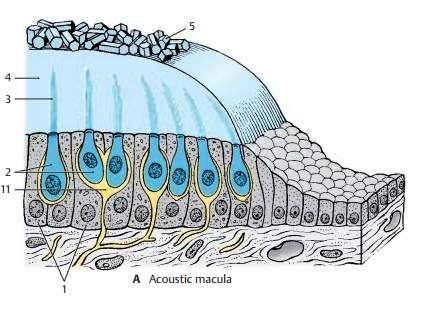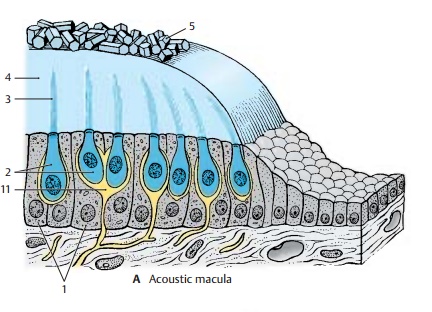Chapter: Human Nervous System and Sensory Organs : The Ear
Acoustic maculae and its function

Acoustic maculae (A). The epithelium lining the endolymphatic space increases in height in the oval areas of the maculae and differentiates into supporting cells and sensory cells. The supporting cells (A1) carry and surround the sensory cells (A2). Each sensory cell is shaped like a flask or am-poule and bears 70 – 80 stereovilli on its api-cal surface (A3). The sensory epithelium is surmounted by a gelatinous membrane, the statoconic (otolithic) membrane (A4), whichcarries crystalline particles of calcium car-bonate, the ear crystals, or statocones(otoliths) (A5). The stereovilli of the sensorycells do not directly project into the stato-conic membrane but are surrounded by a narrow space containing endolymph.

Function of the maculae. The properstimulus for the stereovilli is a shearing force affecting the macula; with increasing acceleration there is a tangential shift be-tween sensory epithelium and statolithic membrane. The resulting deflection of the stereovilli leads to stimulation of the sensory cell and to induction of a nerve im-pulse.
Related Topics